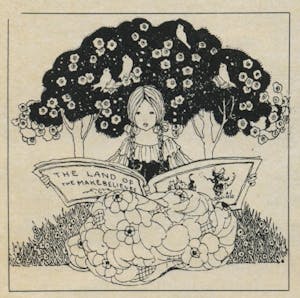My four-year-old’s Christmas “want list” is long. Since he can’t write it down, and since I refuse to be an accomplice to his greed, he has preserved it in fine oral tradition for at least three months—no mean trick when you consider his daily dose of Captain Kangaroo commercials. Courtesy of the Captain, his litany now includes Big Jim’s Rescue Kit, Play-Doh Fun Factory, Sit and Spin, and a Betty Crocker Easy Bake Oven.
Only yesterday I heard him reciting his way down the hall: “and a guitar, and a Bat Man car, and a tree house, and a set of drums like Kevin’s, and some guns-that-don’t-shoot-people, and some new screwdrivers, and maybe a little ball or somethin’ for Drew. Hey, Mom,” he said in a rare moment of selflessness, “what do you want for Christmas? Some pantyhose?”
“No, actually I had my heart set on an ‘eighteen hour girdle’,” I almost replied, but sarcasm has a way of backfiring with a four-year-old. “No,” I said, “what I really want is some magic.”
“Magic? Like how to ‘disappear’ yourself? Not like robots with pinchers!! Ooooh, maybe like our angel candles that spin around and make magic shadows on the ceiling?”
Maybe. I didn’t push him to include Santa Claus in the magic. Some skepticism about the jolly old elf already exists in his small head, and I think he feels the less said about it, the better. Santa Claus departed my own childhood rather abruptly on a most unlikely hot summer day when I was seven. My thirteen-year-old brother and I were in the throes of a fierce squabble over who had to hang wet bathing suits on the clothesline. We had reached a fevered pitch with “is too,” “is not,” “is too,” a string of insults, and the inevitable ammunition of every American child, “It’s a free country, so I don’t have to,” when my brother pulled the ultimate in one-upsmanship. “Well,” he said, “you know there’s no Santa Claus.” He’d won. Tears welling in my eyes, I choked out some half-hearted retort like, “You better hope he doesn’t hear you say that. You won’t get anything for Christmas.” I retreated with the soggy suits while he continued to torture me with his irrefutable evidence. He had assisted my father in setting up my bicycle the year before and could show me the original carton in the garage. Hadn’t I noticed that the note from Santa was in Mother’s handwriting?
From then on, it was a matter of making my own magic. It still is. All Texas children, except maybe those in the Panhandle, have to come to grips with the reality that dreaming of a white Christmas is the best they can do, that no matter how hard they listen, real sleighbells will not ring, and that red velvet Christmas dresses only mean that you will sweat a lot while you eat your turkey and dressing.
My own Christmas memories are not filled with smells of holiday baking, elaborate decoration, or even extravagant gifts. My father, ably assisted by my mother who could write, proofread, paste up, and no doubt run the presses if need be, was the local newspaper editor, a job that traditionally allows little time off for holidays. My mother’s distaste for things domestic is legend. “Finished your Christmas baking, Ruthie?” my Aunt Lois would taunt as she called to request that Mother bring bakery rolls to the Christmas feast. Ruthie never wanted presents either. She still doesn’t. Daughter of the Depression, she cannot enjoy on December 25th that which she knows will be on sale December 26th. My father understood her very early and kept the magic by writing her beautiful letters and enclosing a check. Letters have always been valued in my family. Letters hung on the Christmas tree can be saved, and we said things in them which, especially after we left home and acquired a dubious sophistication, we could not say face to face.
Like those letters, books were and are important to our Christmas. The best ones can be kept from year to year and provide a sort of continuity of experience that is comforting in our often fragmented lives. My little ones could not comprehend the sensory delights of Dickens’ blazing pudding, but perhaps they will have some warm recollection of their ninety-year-old great-grandfather reading “Twas the night before Christmas . . .” with some improvisations when the print seemed too small. Or perhaps they’ll recall my father stuttering a little through Luke’s recounting of the Nativity. At the very least, they may remember that we sat down and savored a holiday together. Though it may never snow for them on Christmas Day and though their mother may never make a homemade fruitcake, the sounds, colors, smells, emotions, and mysteries are there for the reading. Here are some new ones and very old ones we’ve discovered:
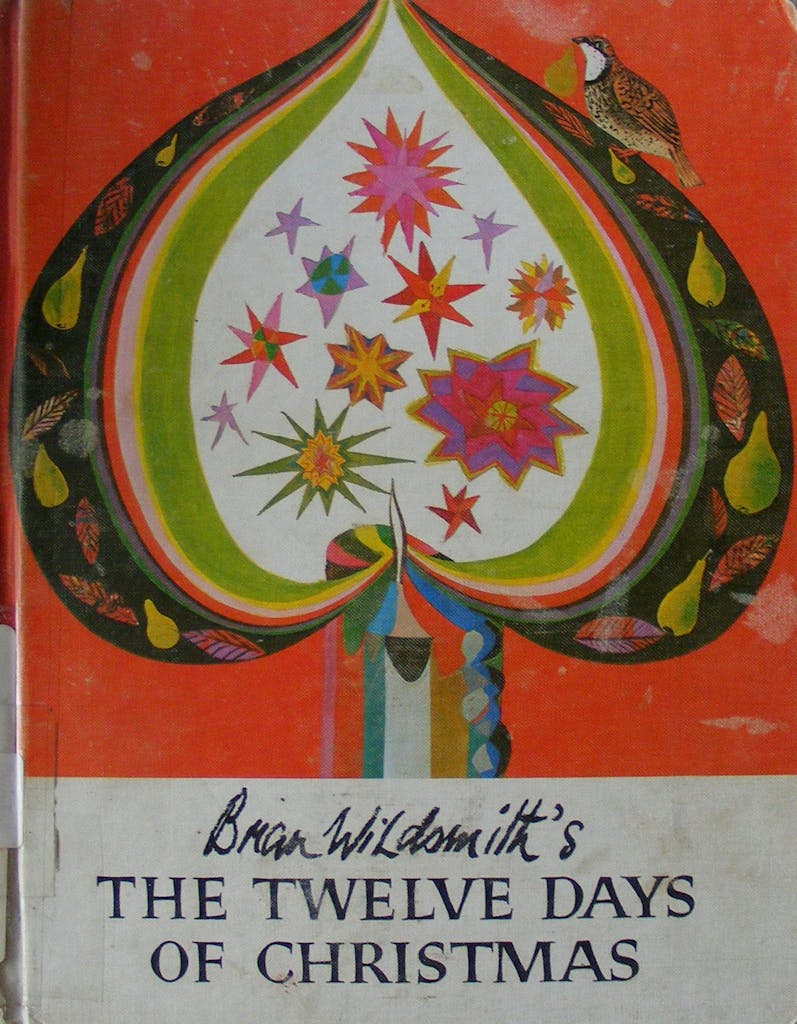
The Twelve Days of Christmas, Brian Wildsmith (Franklin Watts, Inc.). 28 pages. $3.95.
This is just the familiar carol illustrated in the freshest fuchsia, orange, green, and blue as only Wildsmith could do it. Even a newborn baby will love these “lords a’leaping.” Sing it, or just read it (four-year-olds are decidedly embarrassed by singing mothers), or just help turn the pages; the illustrations are more than sufficient.
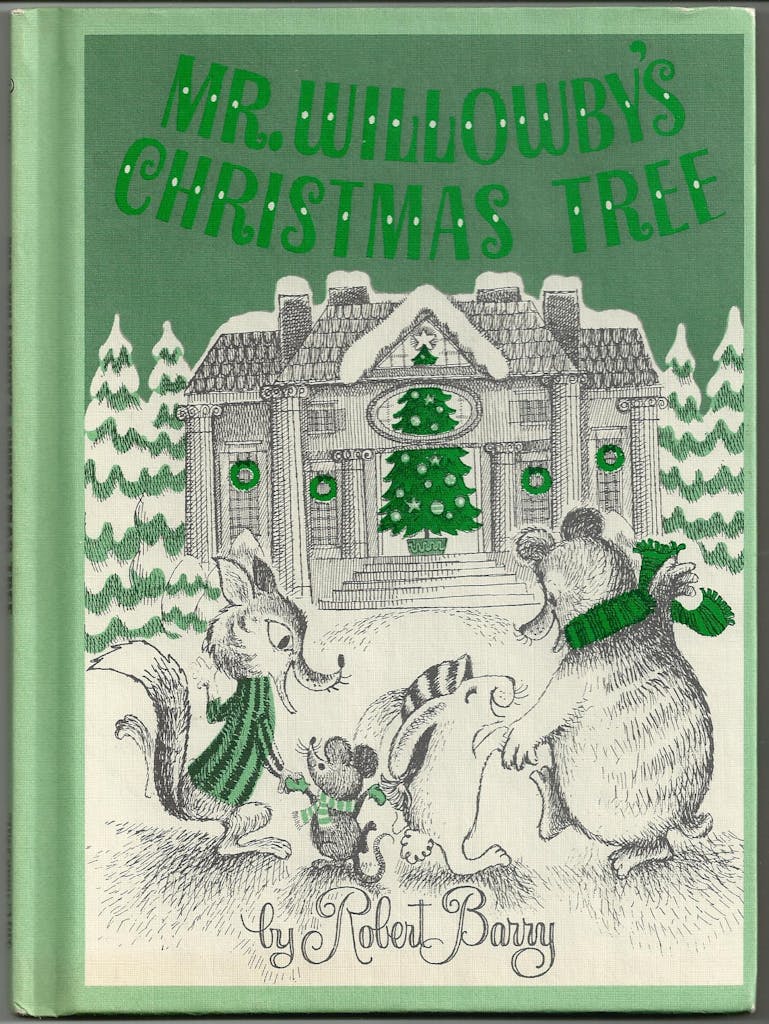
Mr. Willowby’s Christmas Tree, Robert Barry (McGraw Hill). 32 pages. $3.83.
The tree for Mr. Willowby’s Victorian mansion is a bit too tall, so the butler snips off the top, starting a rhyming progression of snippings that will please preschoolers. The tree is shared by a progression of people and animals right down to a tiny mouse who places a cheese star at the top of a twig he calls his tree.

Take Joy! The Tasha Tudor Christmas Book, selected, edited, and illustrated by Tasha Tudor (The World Publishing Co.). 153 pages. $6.95.
This big Christmas anthology is well worth the investment. It contains poems, stories, carols, lore, legends, and, finally, a charming description of the Tudor Family’s New England farmhouse Christmas. (For a fictionalized account of the Tudor’s Christmas, read Becky’s Christmas by the same author—Viking Press.) It’s the sort of tradition-wrought Christmas that children dream of. The celebrating begins on December 6 with St. Nicholas’ birthday and proceeds through the 25th with a marionette show, recipes for Christmas cake, cookies, special fudge and toffee made by the boys in the family, the bringing in of the tree, the hanging of stockings, a special celebration for pets, birds, and dolls, a gingerbread castle, and the Christmas feast itself.
Illustrated with Tasha Tudor’s very warm watercolors and sketches, the book includes a Dickens excerpt, “Cratchit’s Christmas Dinner,” an unforgettable sensory experience full of goose stuffing, blazing pudding, brandy, and roasted chestnuts.
Also included are old favorites such as O. Henry’s “Gift of the Magi” and “The Fir Tree” by Hans Christian Andersen. Tudor’s selection from Dylan Thomas’ “A Child’s Christmas in Wales” is much too short. Don’t settle for anything less than the complete version.
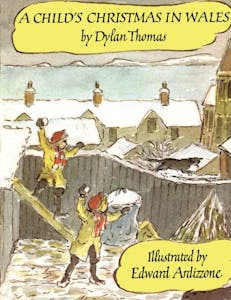
A Child’s Christmas in Wales, Dylan Thomas (New Directions Book). It comes in paperback, but the hardback has lovely woodcut illustrations by Fritz Eichenberg. Hardback 31 pages; $5. Paperback 32 pages; $1.50.
I have yet to find a Christmas book that I like better than this one. Like any very fine poem, it defies description without extensive quotation. It is as witty, tender, and rich a recollection of snow, aunts, uncles, “useful and useless presents,” postmen, fudge, toffee, music, and more snow, as any child’s or adult’s imagination could handle. The poet himself recorded it for Caedmon records, and I recommend that you let him read it to you first. Although we have never known the Welsh snow or ridden the “harp-shaped hills,” Thomas’ remarkable re-creation of his own childhood Christmases has a mysterious universal quality that will make you wonder, “How did he know?”
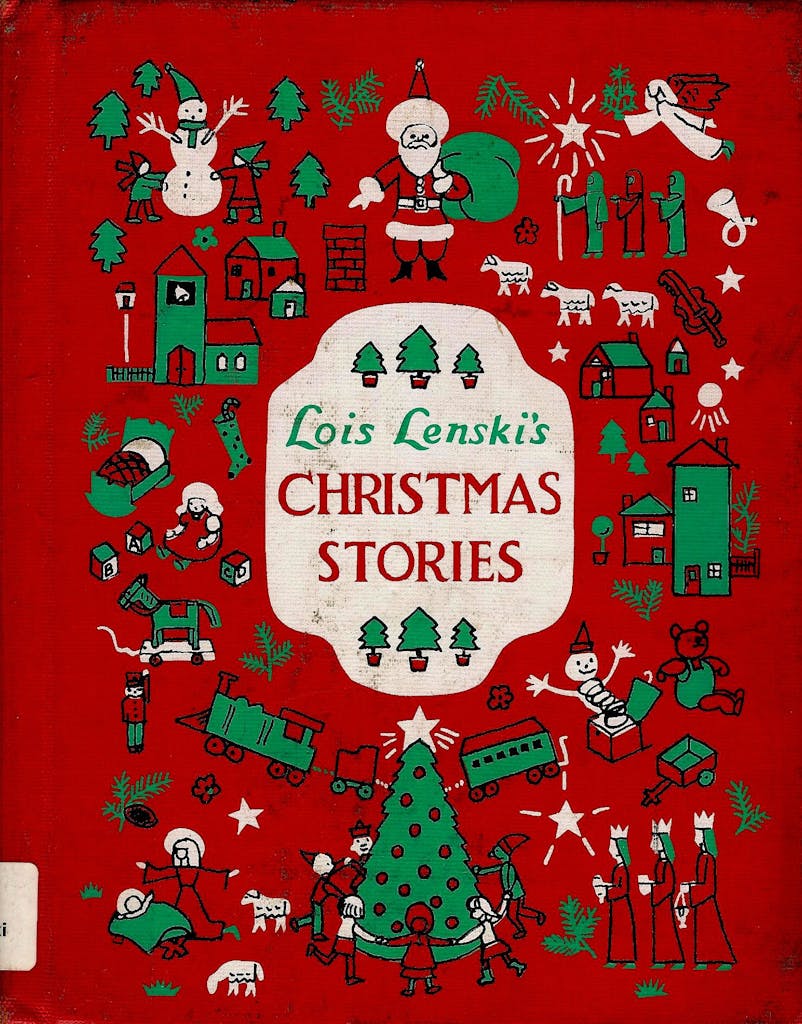
Lois Lenski’s Christmas Stories, Lois Lenski (Lippincott Press). 152 pages. $4.50.
A prolific writer of children’s books for more than 30 years, Lenski has compiled Christmas chapters from nine of her books and added two new stories. Perhaps this is an appropriate year to read these tales of “sparse, but happy Christmases.” Her characters run the gamut from Puritans and sharecroppers to Cajuns and Boston Irish. The first story in the collection, “Day of Work and No Cheer,” may be of historical interest to children and adults. Lenski notes that Christmas celebrations were so frowned on in the early colonies that she has found people in New England as late as 1940 who could not recall a single Christmas in their childhood.
Feminists will be interested to note that girls are not passive figures in these stories.
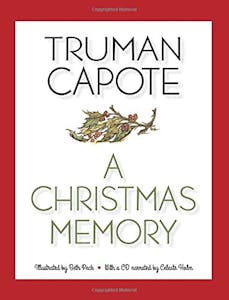
A Christmas Memory, Truman Capote (from slipcase edition, Random House). 45 pages. $6.
I’ve never seen the television performance of this classic, but I doubt that it can compare with Truman Capote’s fresh, clear prose quietly read. Twelve-year-olds and up can appreciate this sensitive telling of a Depression Christmas and a very special friendship.
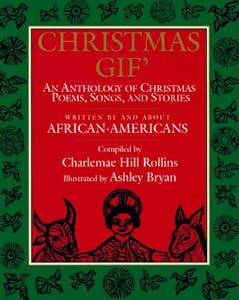
Christmas Gif’, an anthology of Christmas poems, songs, and stories written by and about Negroes, compiled by Charlemae Rollins (Follet Publishing Co.). 118 pages. $6.95.
You don’t have to be seeking black pride to love this anthology. My rediscovery of Roark Bradford’s “How Come Christmas,” a story I hadn’t heard since I was eight years old, was an unexpected pleasure. Regardless of your theological scruples, no one can fault this beautiful blending of the Santa Claus story with the Nativity scene. I had forgotten “de Lawd’s” conversation with “Sandy Claus” which has been pleasing mothers since its publication in 1948: “Yeah, I knows about chilluns, too,” say de Lawd.
“Chilluns got to fret and git in devilment ev’y now and den and git a whuppin f’em dey maw, or else dey skin won’t get loose so’s dey kin grow. But you jest keep y’eyes on ’em and make ’em all happy about once a year. How’s dat?”
Poems by Langston Hughes and Gwendolyn Brooks, spirituals, stories, and recollections of Christmas on plantations make this book not only an interesting piece of Black history, but a downright delightful reading for any Christmas celebration.
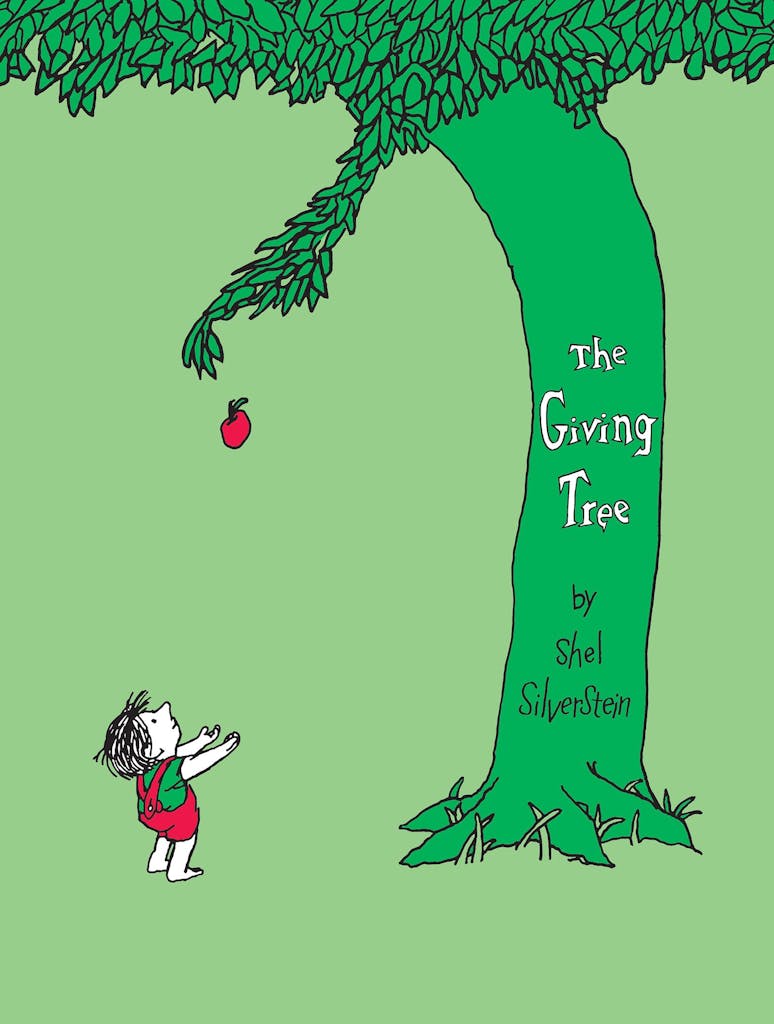
The Giving Tree, Shel Silverstein (Harper and Row). 27 pages. $3.95.
This isn’t really a Christmas book, just a tender parable for children of selfless giving. Simply illustrated, the story tells of a friendship between a boy and a tree. The tree provides limbs for climbing, apples for eating, and later, apples for selling. Eventually the tree even gives its trunk so that the boy may have a boat. When the boy, now a tired old man, returns, the tree regrets that he has only a stump to offer. The boy replies that he only needs a quiet place to sit and rest. Once again the tree gives.
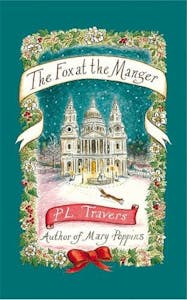
The Fox at the Manger, P. L. Travers (W. W. Norton and Company). 75 pages.
Any mother who has ever sat through a church service in a large cathedral with small children will identify immediately with the mother in the introductory scene of this curious little book. Based on “The Carol of the Friendly Beasts” which tells of the animals in the stable comparing gifts they have given to the Child, Travers’ story takes the legend a step further to include the wild animals—particularly the fox. This is an allegorical tale full of mystery and magic to be read aloud to older children. When you are done, they will ask, “What does it mean?” Let them read it again.
Wood engravings by Thomas Bewick, one of England’s foremost engravers, are a bonus.
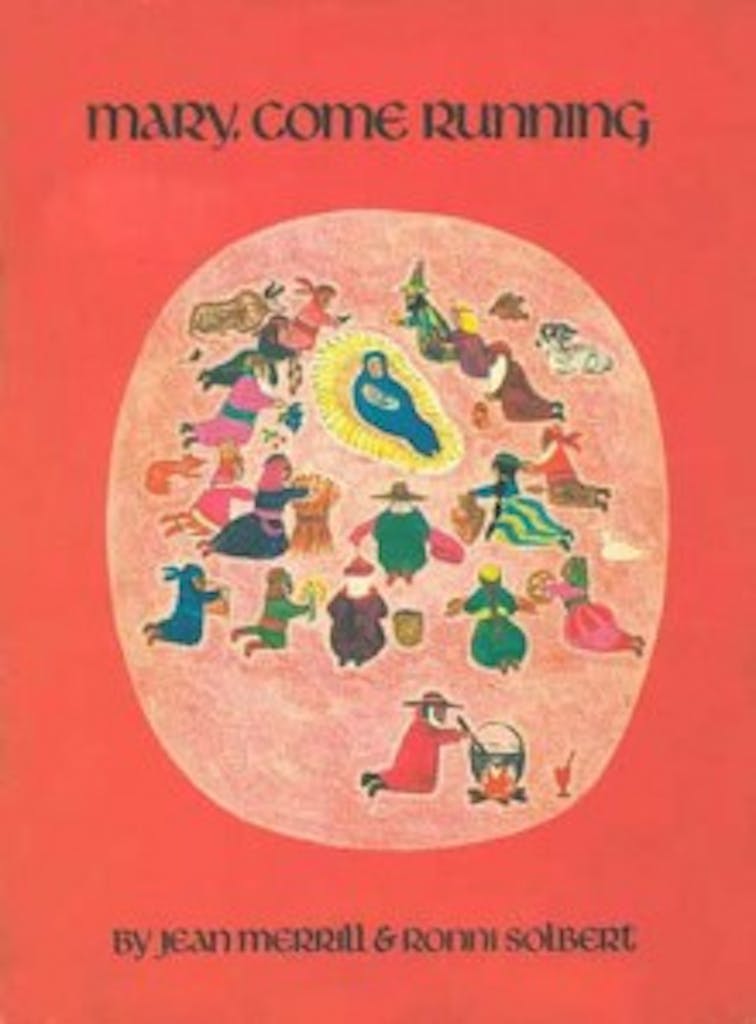
Mary, Come Running, Jean Merrill and Ronni Solbert, (The McCall Publishing Co.). 32 pages. $4.95.
Drawn from the Spanish carol “Mary, Come Running” that records the presence of gypsies in Bethlehem, this book gives a fresh perspective for a traditional scene. Illustrations in clear reds, greens, and browns are distinctly Spanish.
Oldest of gypsies, Old Rom recounts the tale for a small gypsy boy of how gypsies came to Bethlehem “to steal, of course.” Old Rom says gypsies only stole a little from each man—“as much as a good man would have given us gladly, had he known of our need.” (You be the judge as to whether your child’s ethics can handle this legend.) Caught stealing Joseph’s chocolate he’d brought to sell for taxes, the gypsies are invited out of the cold by gracious Mary, who shares the hot chocolate with all the visitors to the bare stable. Gypsies bring silks and stolen linens to swaddle the baby. They came to steal, but stayed to worship this King who was born “as poor as any Romany,” “who rode a donkey like us,” and “who knew that gold and silver may rule men’s minds, but never win their hearts.”
Feeling the magic of the holiday is not so difficult with a pair of small believers. We’ve unwrapped the small wooden Christmas crèche and my four- year-old says we need some gypsies. The Holy Family is intact. I count two shepherds, three angels, a donkey, a lamb, and a cow. I see only Melchior and Balthasar of the three kings we had last year. The two-year-old looks sheepish, then smiles and pats his overall pocket. “My Burger King,” he says.
- More About:
- Books



